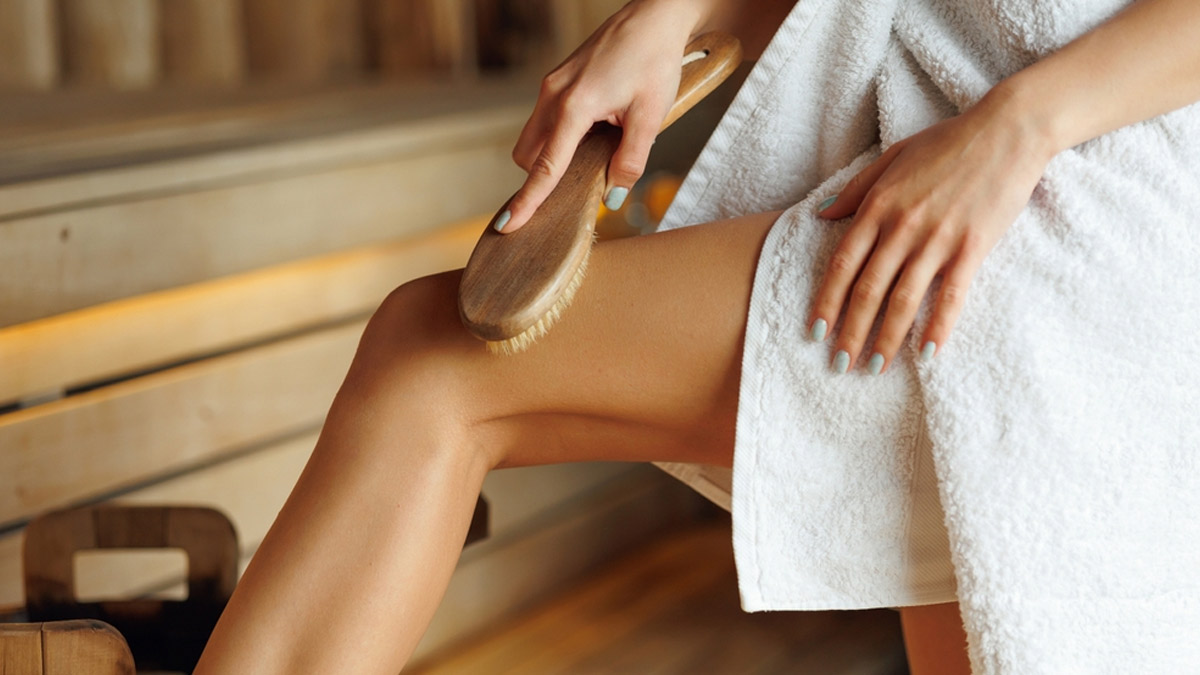
Have you heard about dry brushing, a technique that involves using a dry and natural-bristled brush on the skin? This technique that helps to gently exfoliate the skin is usually performed before showering or bathing. Making this part of your skincare routine can help you provide various benefits and result in glowing skin. In this article, we list the benefits of dry brushing and how to practise it.
Table of Content:-
Benefits Of Body Brushing

Dry brushing, as the name suggests, involves using a dry brush with natural bristles to gently massage the skin in upward strokes, typically before showering or bathing. While the concept may seem simple, the benefits it offers for skin health and vitality are manifold.
Exfoliates The Skin
Dry brushing is known for its ability to exfoliate the skin effectively. As the bristles move across the skin, they help remove dead skin cells, unclog pores, and increase blood flow. This gentle exfoliation not only reveals smoother and softer skin but also enhances the skin's ability to absorb moisturisers and other skincare products, thereby maximising their efficacy.
Promotes Lymphatic Drainage
Moreover, dry brushing is believed to support lymphatic drainage, a crucial function that helps remove toxins and waste from the body. The lymphatic system, often referred to as the body's 'garbage disposal', relies on movement and muscle contractions to facilitate the flow of lymph fluid. By stimulating lymphatic circulation through dry brushing, we can support the body's natural detoxification process, leading to clearer and healthier-looking skin.
Also Read: Path To Radiant Skin: Expert Explains The Right Way To Exfoliate Your Face

Promotes Blood Circulation
Beyond its exfoliating and detoxifying properties, dry brushing also promotes blood circulation, which is essential for skin health. Improved circulation means better nutrient delivery to the skin cells, resulting in a more nourished and rejuvenated complexion. Also, enhanced blood flow can contribute to a natural glow, giving the skin a radiant and youthful appearance.
Improves Skin Texture
For individuals dealing with conditions like cellulite or uneven skin texture, dry brushing may offer some relief. While it's important to manage expectations, regular dry brushing combined with a healthy lifestyle and skincare regimen can help improve the appearance of cellulite and promote smoother-looking skin over time.
Also Read: From Over-Exfoliating To Popping Acne: Here're 8 Skincare Habits That Can Worsen Your Acne
Ways To Practice Dry Brushing
- Incorporating dry brushing into your skincare routine is simple and can be done in just a few minutes each day.
- Begin by selecting a high-quality body brush with natural bristles, preferably made from materials like boar hair or sisal.
- Before showering, gently brush your skin using long, sweeping motions, starting from your feet and moving upwards towards your heart.
- Pay attention to areas prone to dryness or roughness, such as elbows, knees, and thighs, but be mindful to avoid sensitive areas and any areas of broken skin.
Bottomline
While dry brushing offers numerous benefits for skin health and vitality, it's essential to approach it with caution, especially if you have sensitive or inflamed skin. Always start with gentle pressure and listen to your body's cues. Remember to clean your body brush regularly to prevent the buildup of bacteria and maintain its effectiveness. If you experience any discomfort or irritation, discontinue dry brushing and consult with a dermatologist.
[Disclaimer: This article contains information for informational purposes only, hence, we advise you to consult your expert if you are dealing with any skin issues.]
Also watch this video
How we keep this article up to date:
We work with experts and keep a close eye on the latest in health and wellness. Whenever there is a new research or helpful information, we update our articles with accurate and useful advice.
Current Version